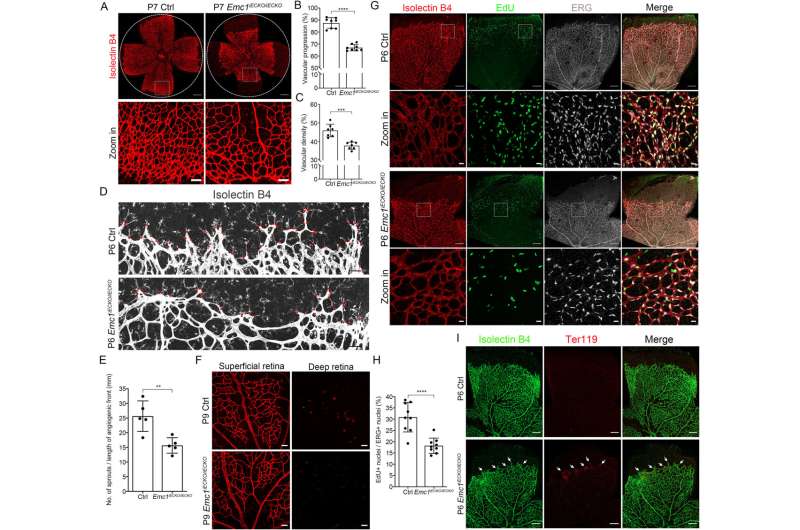This article has been reviewed according to Science X's editorial process and policies. Editors have highlighted the following attributes while ensuring the content's credibility:
fact-checked
proofread
Defective EMC1 protein may contribute to a severe ocular disorder, familial exudative vitreoretinopathy

In a recent study published in the journal Genes & Diseases, researchers from University of Electronic Science and Technology of China have uncovered a key relationship between the EMC1 protein and retinal vascular development. Mutations in the EMC1 gene appear to be associated with familial exudative vitreoretinopathy (FEVR), a severe ocular condition. The discovery offers potential new therapeutic avenues for treating this disorder and other related vascular defects.
Scientists have discovered that the depletion of Emc1 in endothelial cells in mice causes significant defects in retinal vessel development, including reduced vascular growth and retinal bleeding. This impairment is intricately linked with the Wnt signaling pathway, a critical regulator for blood vessel development, whose gene activity is altered when EMC1 is compromised.
This observation prompted researchers to examine the EMC1 gene in patients with FEVR, leading to the identification of a genetic variant in two related patients, suggesting a potential genetic connection. Notably, treating EMC1-depleted cells with LiCl, an activator of the Wnt signaling pathway, mitigated some of the adverse effects, hinting at potential therapeutic avenues for conditions associated with EMC1 dysfunction.
The EMC1 protein has emerged as a pivotal factor in retinal blood vessel development, operating primarily via the Wnt signaling pathway. Variants in the EMC1 gene found in FEVR patients can disrupt this vital process, shedding light on potential causes and treatment avenues for the condition.
This discovery enhances our understanding of FEVR's origins and broadens the horizon for targeted therapeutic interventions. By focusing on the Wnt signaling pathway, researchers hope to develop treatments that could alleviate or even reverse the vascular defects associated with compromised EMC1 function.
More information: Shujin Li et al, Defective EMC1 drives abnormal retinal angiogenesis via Wnt/β-catenin signaling and may be associated with the pathogenesis of familial exudative vitreoretinopathy, Genes & Diseases (2022). DOI: 10.1016/j.gendis.2022.10.003




















